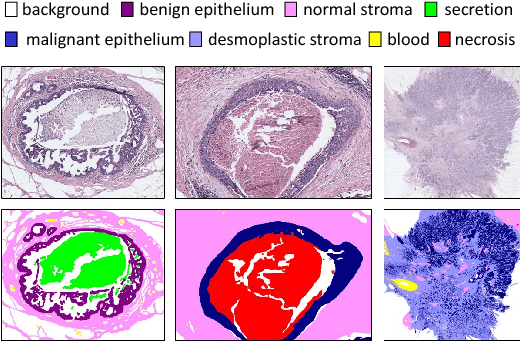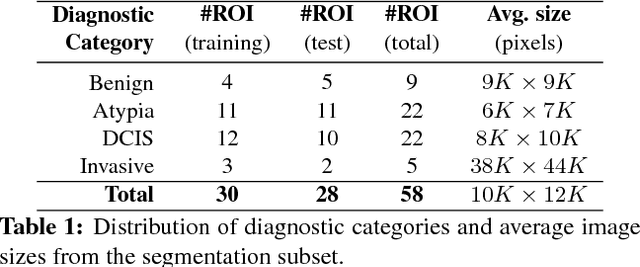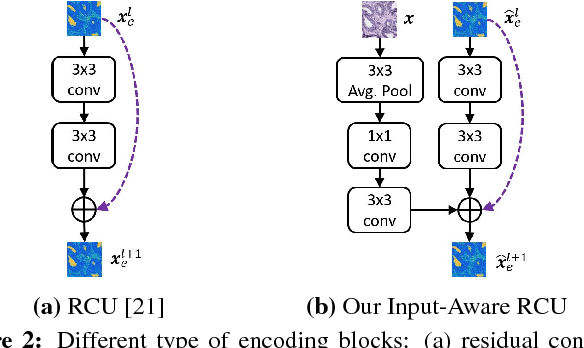Joann Elmore
Learning to Segment Breast Biopsy Whole Slide Images
Oct 10, 2017



Abstract:We trained and applied an encoder-decoder model to semantically segment breast biopsy images into biologically meaningful tissue labels. Since conventional encoder-decoder networks cannot be applied directly on large biopsy images and the different sized structures in biopsies present novel challenges, we propose four modifications: (1) an input-aware encoding block to compensate for information loss, (2) a new dense connection pattern between encoder and decoder, (3) dense and sparse decoders to combine multi-level features, (4) a multi-resolution network that fuses the results of encoder-decoders run on different resolutions. Our model outperforms a feature-based approach and conventional encoder-decoders from the literature. We use semantic segmentations produced with our model in an automated diagnosis task and obtain higher accuracies than a baseline approach that employs an SVM for feature-based segmentation, both using the same segmentation-based diagnostic features.
 Add to Chrome
Add to Chrome Add to Firefox
Add to Firefox Add to Edge
Add to Edge